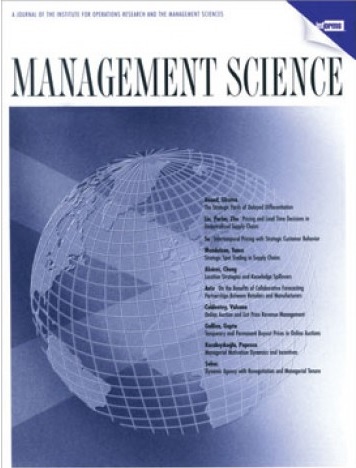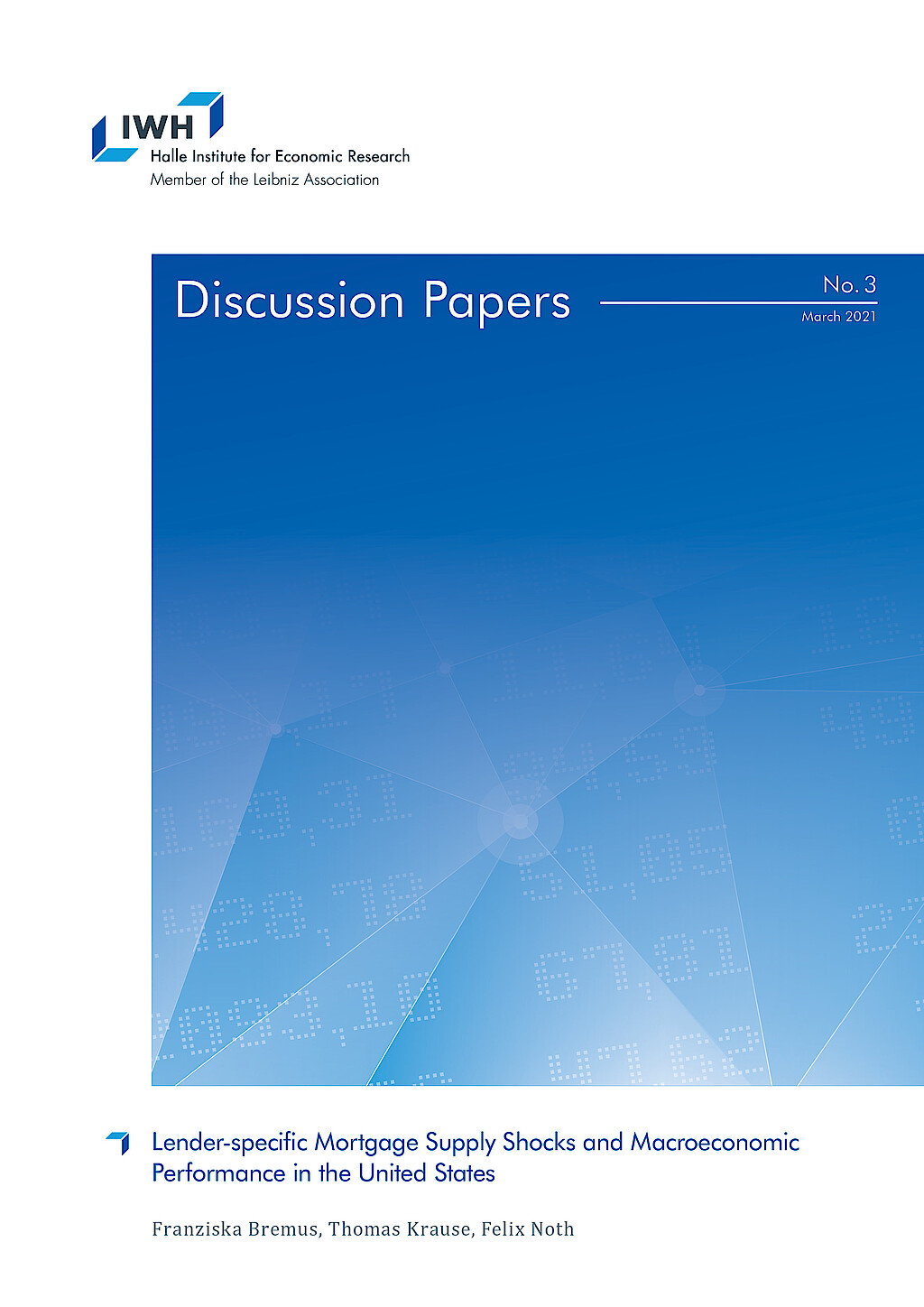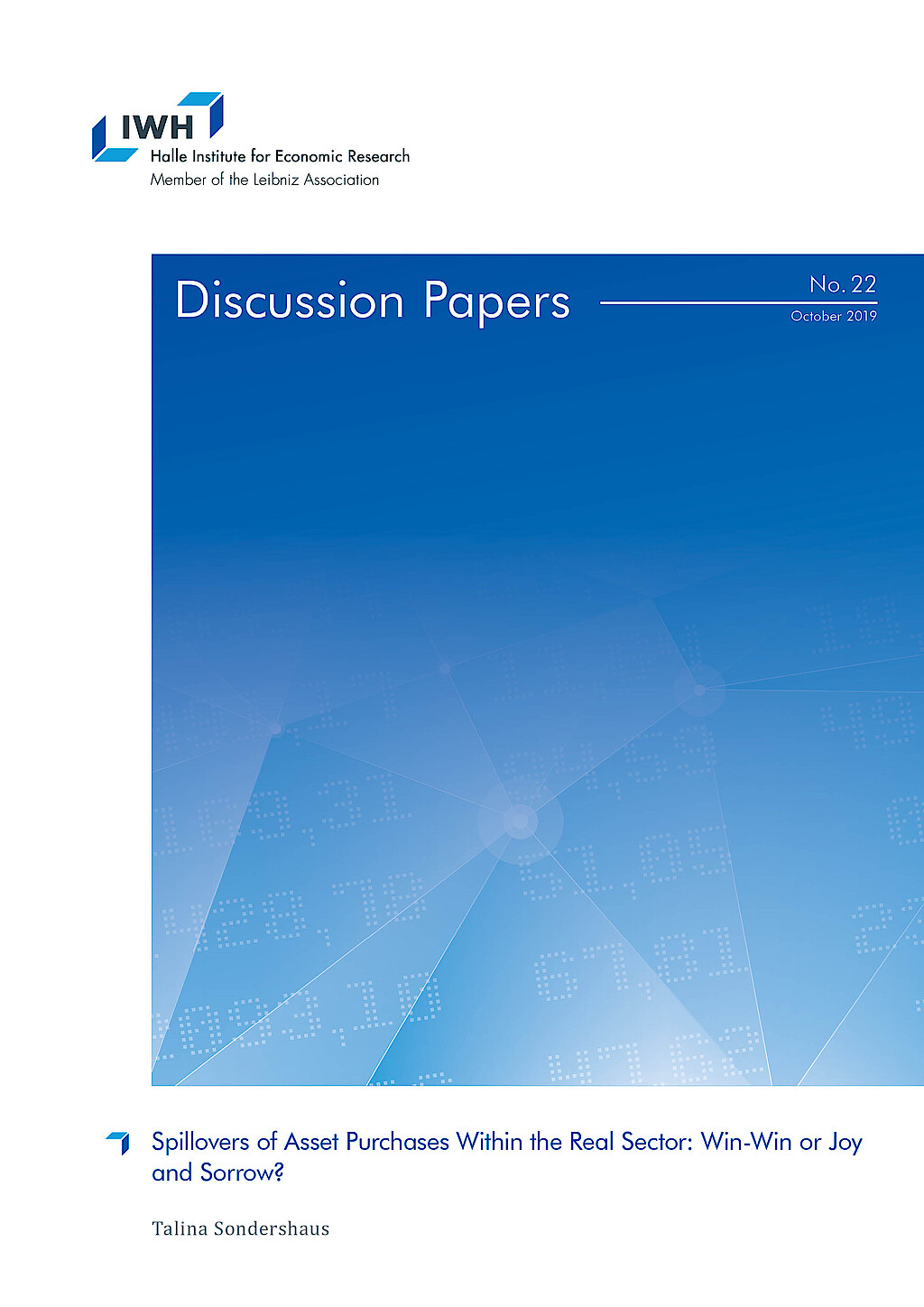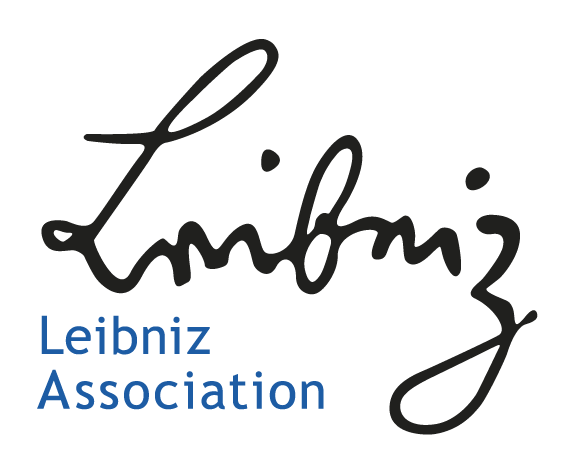Financial System Adaptability and Resilience
This research group investigates critical aspects of financial system adaptability and resilience. First, it analyses the impact of natural disasters on financial systems. Second, the group aims to investigate the effects of political preferences for the green transition. Third, the group's research analyses the role of culture in economies.
Research Cluster
Financial Resilience and RegulationYour contact

- Department Financial Markets
EXTERNAL FUNDING
08.2022 ‐ 07.2025
OVERHANG: Debt overhang and green investments - the role of banks in climate-friendly management of emission-intensive fixed assets
The collaborative project “Debt Overhang and Green Investments” (OVERHANG) aims to investigate the role of banks in the climate-friendly management of emission-intensive fixed assets. This will identify policy-relevant insights on financial regulation, government-controlled lending and financial stability, as well as raise awareness among indebted stakeholders.
01.2015 ‐ 12.2019
Interactions between Bank-specific Risk and Macroeconomic Performance
07.2016 ‐ 12.2018
Relationship Lenders and Unorthodox Monetary Policy: Investment, Employment, and Resource Reallocation Effects
We combine a number of unique and proprietary data sources to measure the impact of relationship lenders and unconventional monetary policy during and after the European sovereign debt crisis on the real economy. Establishing systematic links between different research data centers (Forschungsdatenzentren, FDZ) and central banks with detailed micro-level information on both financial and real activity is the stand-alone proposition of our proposal. The main objective is to permit the identification of causal effects, or their absence, regarding which policies were conducive to mitigate financial shocks and stimulate real economic activities, such as employment, investment, or the closure of plants.
Refereed Publications

Structural Reforms in Banking: The Role of Trading
in: Journal of Financial Regulation, No. 1, 2017
Abstract
In the wake of the recent financial crisis, significant regulatory actions have been taken aimed at limiting risks emanating from banks’ trading activities. The goal of this article is to look at the alternative reforms in the US, the UK and the EU, specifically with respect to the role of proprietary trading. Our conclusions can be summarized as follows: First, the focus on a prohibition of proprietary trading, as reflected in the Volcker Rule in the US and in the current proposal of the European Commission (Barnier proposal), is inadequate. It does not necessarily reduce risk-taking and it is likely to crowd out desired trading activities, thereby possibly affecting financial stability negatively. Second, trading separation into legally distinct or ring-fenced entities within the existing banking organizations, as suggested under the Vickers proposal for the UK and the Liikanen proposal for the EU, is a more effective solution. Separation limits cross-subsidies between banking and proprietary trading and diminishes contagion risk, while still allowing for synergies and risk management across banking, non-proprietary trading, and proprietary trading.

Bank Risk Proxies and the Crisis of 2007/09: A Comparison
in: Applied Economics Letters, No. 7, 2017
Abstract
The global financial crisis has again shown that it is important to understand the emergence and measurement of risks in the banking sector. However, there is no consensus in the literature which risk proxy works best at the level of the individual bank. A commonly used measure in applied work is the Z-score, which might suffer from calculation issues given poor data quality. Motivated by the variety of bank risk proxies, our analysis reveals that nonperforming assets are a well-suited complement to the Z-score in studies of bank risk.

How Do Insured Deposits Affect Bank Risk? Evidence from the 2008 Emergency Economic Stabilization Act
in: Journal of Financial Intermediation, January 2017
Abstract
This paper tests whether an increase in insured deposits causes banks to become more risky. We use variation introduced by the U.S. Emergency Economic Stabilization Act in October 2008, which increased the deposit insurance coverage from $100,000 to $250,000 per depositor and bank. For some banks, the amount of insured deposits increased significantly; for others, it was a minor change. Our analysis shows that the more affected banks increase their investments in risky commercial real estate loans and become more risky relative to unaffected banks following the change. This effect is most distinct for affected banks that are low capitalized.

On the Nonexclusivity of Loan Contracts: An Empirical Investigation
in: Management Science, No. 12, 2016
Abstract
We study how a bank's willingness to lend to a previously exclusive firm changes once the firm obtains a loan from another bank ("outside loan") and breaks an exclusive relationship. Using a difference-in-difference analysis and a setting where outside loans are observable, we document that an outside loan triggers a decrease in the initial bank's willingness to lend to the firm, i.e., outside loans are strategic substitutes. Consistent with concerns about coordination problems and higher indebtedness, we find that this reaction is more pronounced the larger the outside loan and it is muted if the initial bank's existing and future loans retain seniority and are protected with valuable collateral. Our results give a benevolent role to transparency enabling banks to mitigate adverse effects from outside loans. The resulting substitute behavior may also act as a stabilizing force in credit markets limiting positive comovements between lenders, decreasing the possibility of credit freezes and financial crises.

Foreign Funding Shocks and the Lending Channel: Do Foreign Banks Adjust Differently?
in: Finance Research Letters, November 2016
Abstract
We document for a set of Latin American emerging countries that the different nature of foreign funding accessed by foreign and local banks affected their lending performance after September 2008. We show that lending growth was weaker for shock-affected foreign banks compared to shock-affected local banks. This evidence represents valuable policy information for regulators concerned with the stability and well-functioning of banking sectors.
Working Papers

Covered Bonds and Bank Portfolio Rebalancing
in: Norges Bank Working Papers, No. 6, 2021
Abstract
We use administrative and supervisory data at the bank and loan level to investigate the impact of the introduction of covered bonds on the composition of bank balance sheets and bank risk. Covered bonds, despite being collateralized by mortgages, lead to a shift in bank lending from mortgages to corporate loans. Young and low-rated firms in particular receive more credit, suggesting that overall credit risk increases. At the same time, we find that total balance sheet liquidity increases. We identify the channel in a theoretical model and provide empirical evidence: Banks with low initial liquidity and banks with sufficiently high risk-adjusted return on firm lending drive the results.

Cultural Resilience, Religion, and Economic Recovery: Evidence from the 2005 Hurricane Season
in: IWH Discussion Papers, No. 9, 2021
Abstract
This paper investigates the critical role of religion in the economic recovery after high-impact natural disasters. Exploiting the 2005 hurricane season in the southeast United States, we document that establishments in counties with higher religious adherence rates saw a significantly stronger recovery in terms of productivity for 2005-2010. Our results further suggest that a particular religious denomination does not drive the effect. We observe that different aspects of religion, such as adherence, shared experiences from ancestors, and institutionalised features, all drive the effect on recovery. Our results matter since they underline the importance of cultural characteristics like religion during and after economic crises.

Lender-specific Mortgage Supply Shocks and Macroeconomic Performance in the United States
in: IWH Discussion Papers, No. 3, 2021
Abstract
This paper provides evidence for the propagation of idiosyncratic mortgage supply shocks to the macroeconomy. Based on micro-level data from the Home Mortgage Disclosure Act for the 1990-2016 period, our results suggest that lender-specific mortgage supply shocks affect aggregate mortgage, house price, and employment dynamics at the regional level. The larger the idiosyncratic shocks to newly issued mortgages, the stronger are mortgage, house price, and employment growth. While shocks at the level of shadow banks significantly affect mortgage and house price dynamics, too, they do not matter much for employment.

Trade Shocks, Credit Reallocation and the Role of Specialisation: Evidence from Syndicated Lending
in: IWH Discussion Papers, No. 15, 2020
Abstract
This paper provides evidence that banks cut lending to US borrowers as a consequence of a trade shock. This adverse reaction is stronger for banks with higher ex-ante lending to US industries hit by the trade shock. Importantly, I document large heterogeneity in banks‘ reaction depending on their sectoral specialisation. Banks shield industries in which they are specialised in and at the same time reduce the availability of credit to industries they are not specialised in. The latter is driven by low-capital banks and lending to firms that are themselves hit by the trade shock. Banks‘ adjustments have adverse real effects.

Spillovers of Asset Purchases Within the Real Sector: Win-Win or Joy and Sorrow?
in: IWH Discussion Papers, No. 22, 2019
Abstract
Events which have an adverse or positive effect on some firms can disseminate through the economy to firms which are not directly affected. By exploiting the first large sovereign bond purchase programme of the ECB, this paper investigates whether more lending to some firms spill over to firms in the surroundings of direct beneficiaries. Firms operating in the same industry and region invest less and reduce employment. The paper shows the importance to consider spillover effects when assessing unconventional monetary policies: Differences between treatment and control groups can be entirely attributed to negative effects on the control group.



















